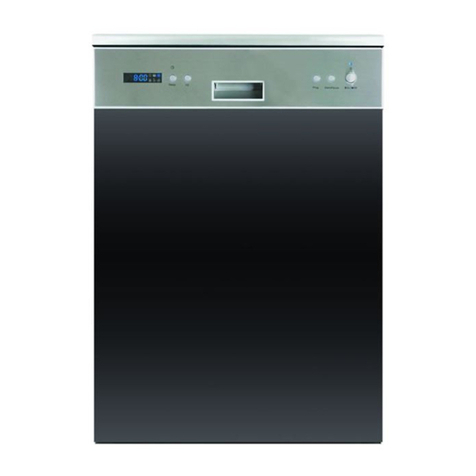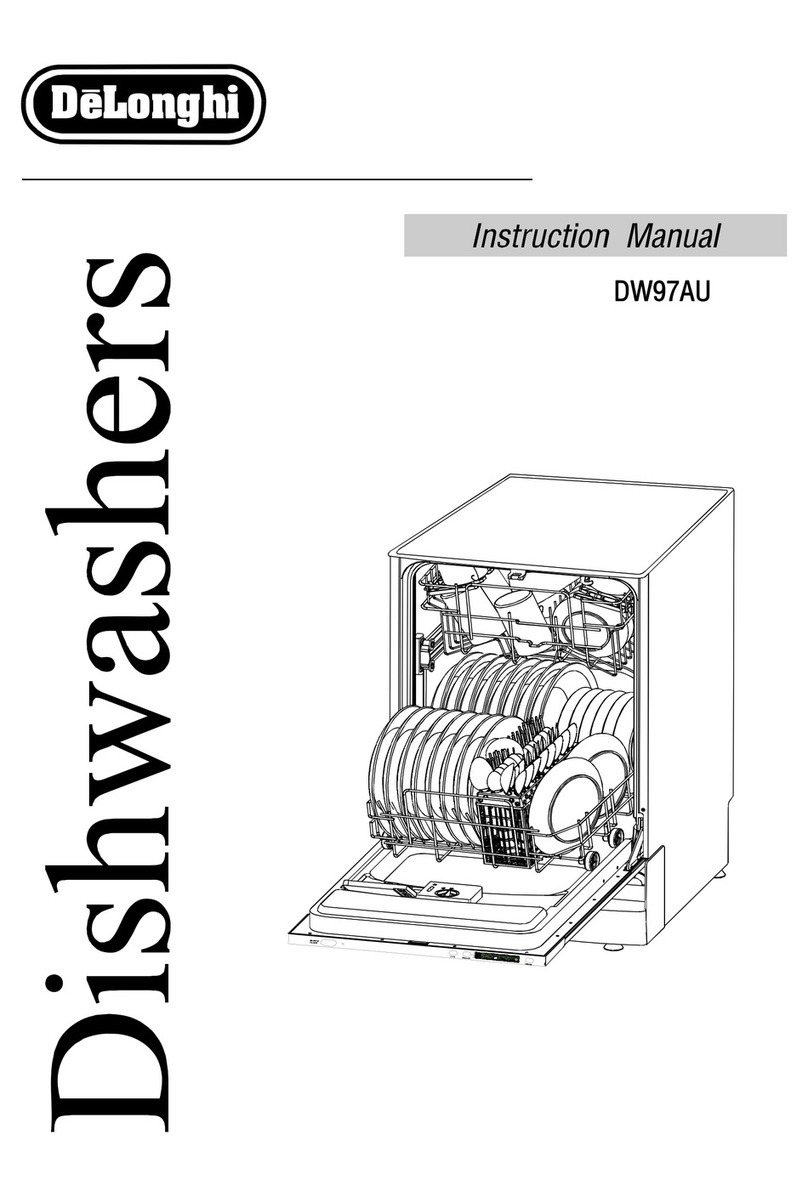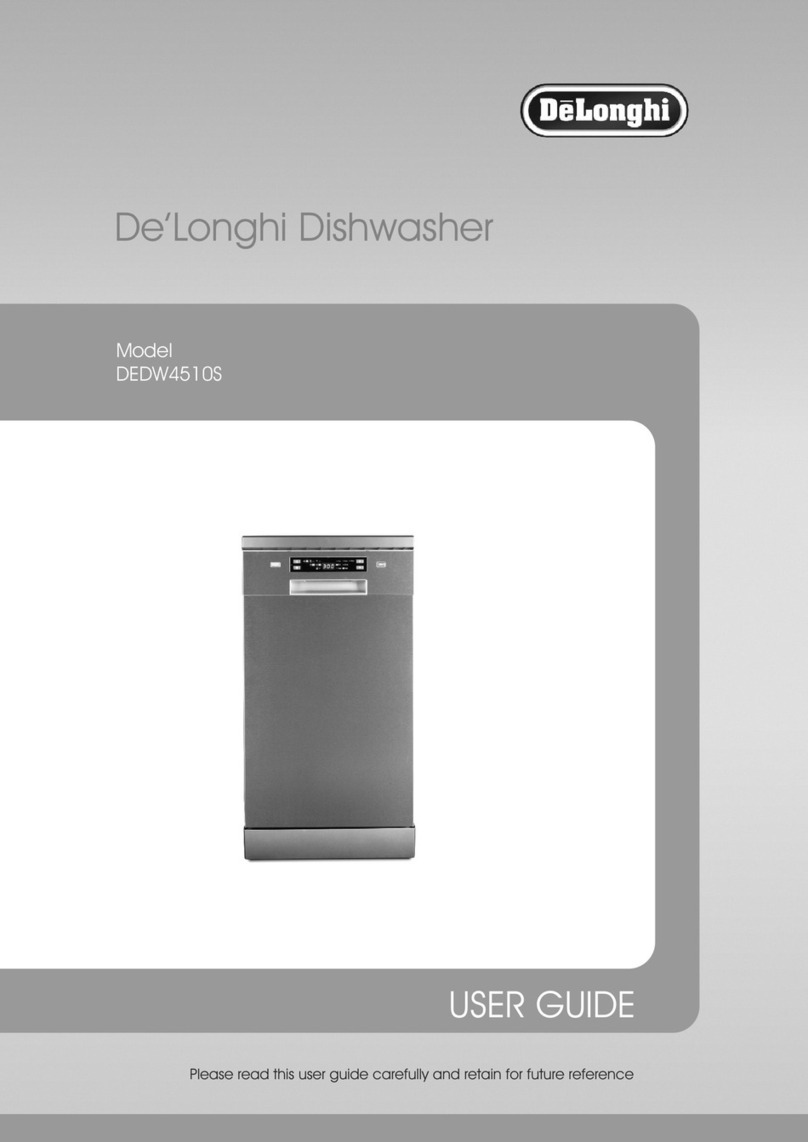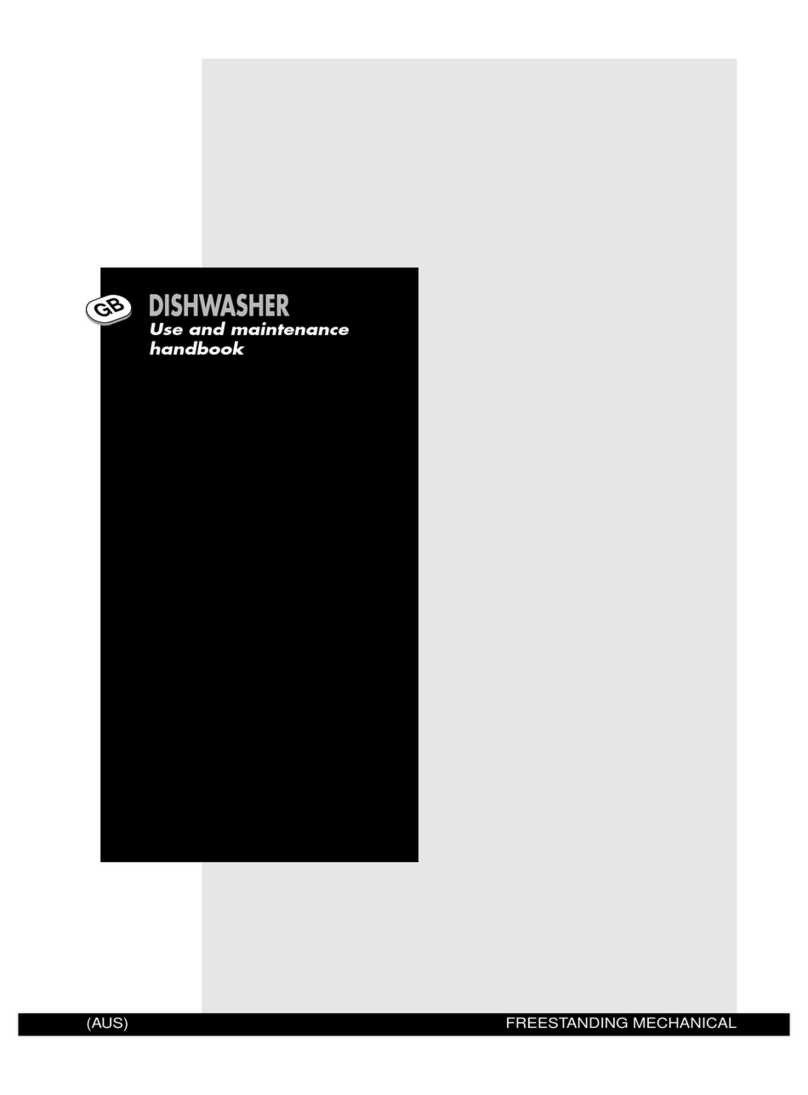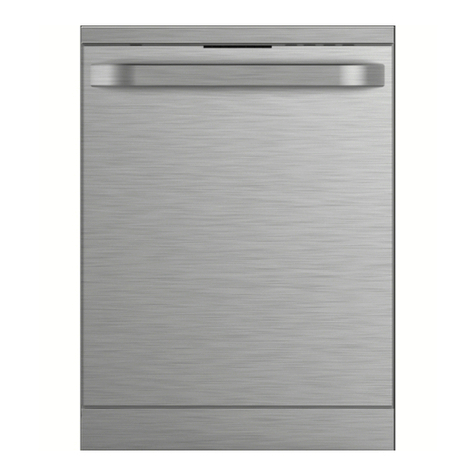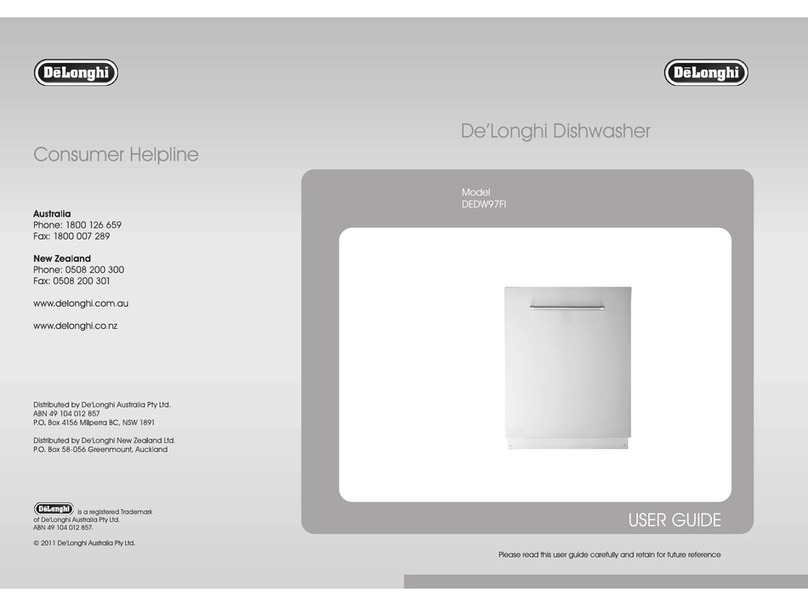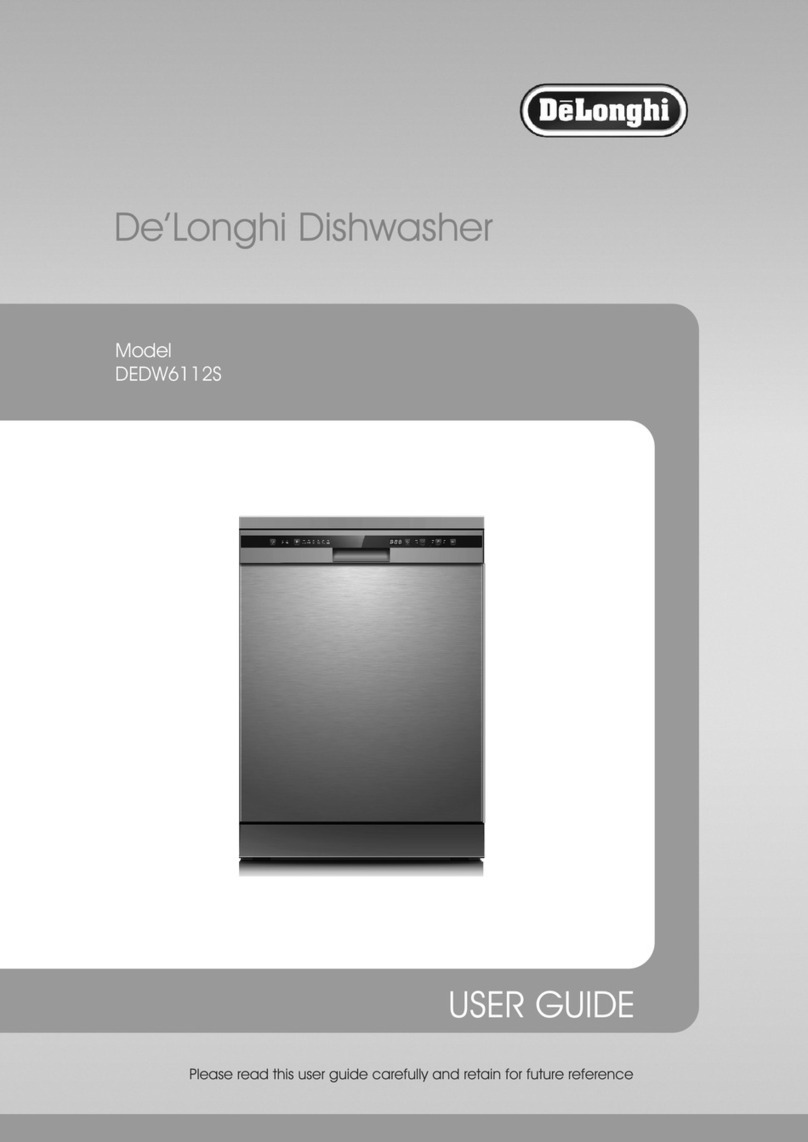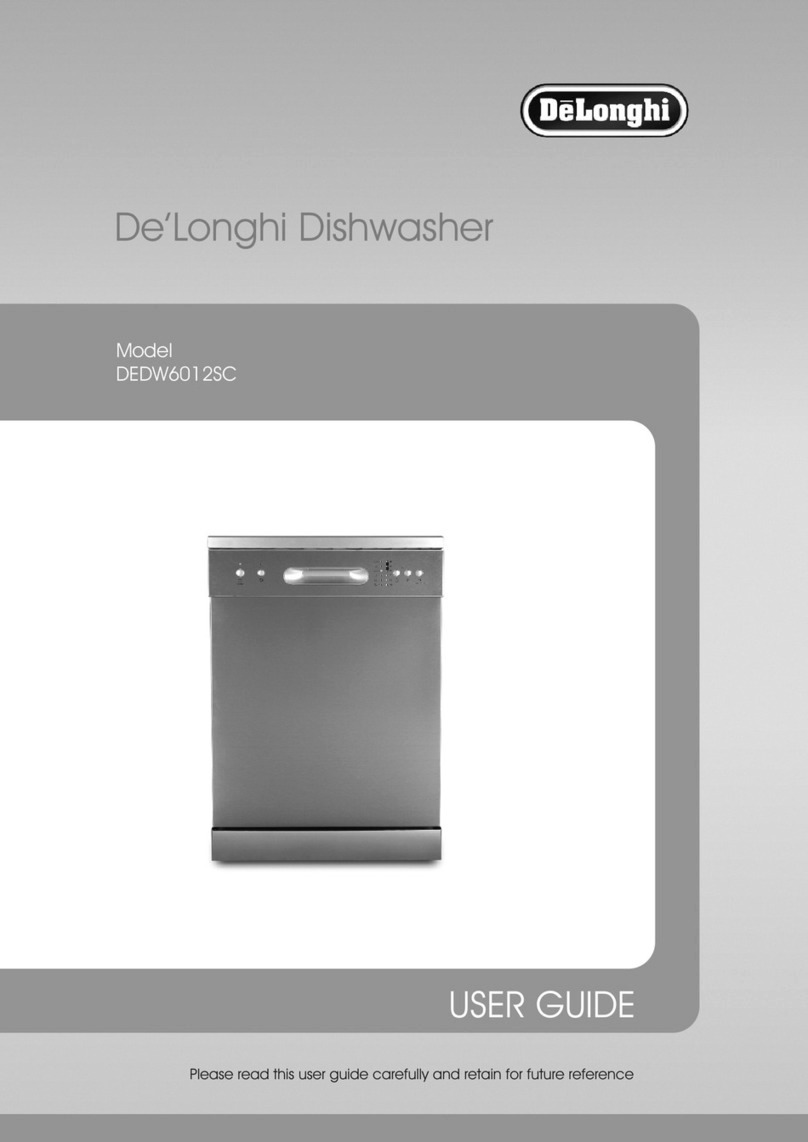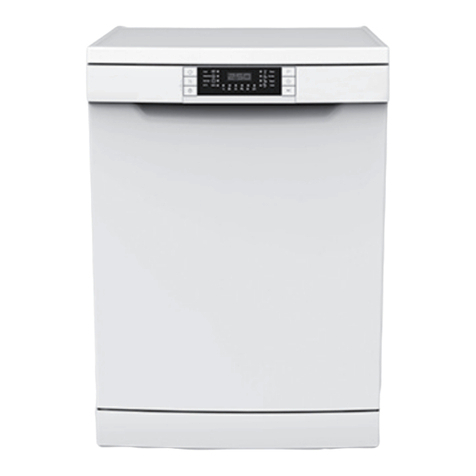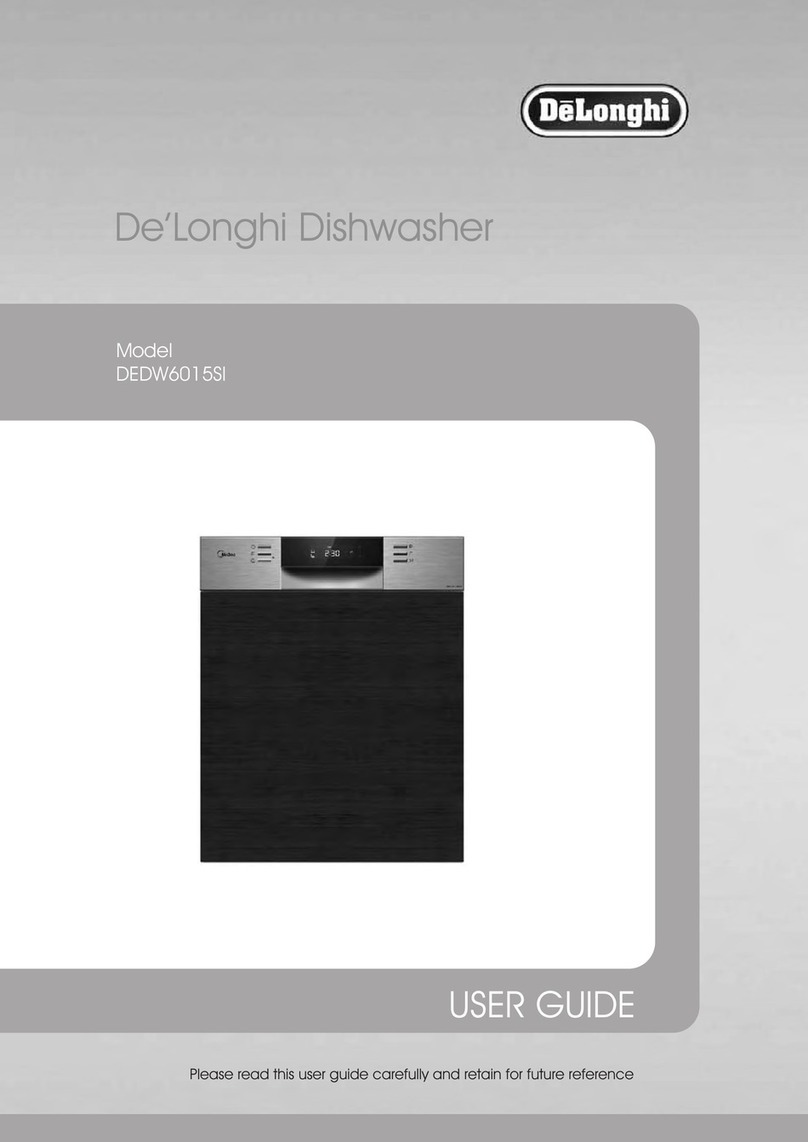Dishwasher Safety Precautions
Before the appliance is used, it must
be properly positioned and installed
as described in this manual, so read
the manual carefully. To reduce the
risk of fire, electrical shock or injury
when using the appliance, follow
basic precaution, including the
following:
DANGER
WARNING
Care and Cleaning
Grounding Instructions
This appliance must be grounded. In the event of a
Ÿmalfunction or breakdown, grounding will reduce
the risk of an electric shock by providing a path of
least resistance of electric current. This appliance is
equipped with a cord having an equipment-
grounding conductor and a grounding plug. The
plug must be plugged into an appropriate outlet
that is installed and grounded in accordance with all
local codes and ordinances.
Improper connection of the equipment-grounding
Ÿconductor can result in the risk of an electric shock.
Check with a qualified electrician or service
Ÿrepresentative if you are in doubt whether the
appliance is properly grounded. Do not modify the
plug provided with the appliance; If it does not fit
the outlet. Have a proper outlet installed by a
qualified electrician.
When using your dishwasher, you should prevent
Ÿplastic items from coming into contact with the
heating element. (This instruction is only applicable
to machines with a visual heating element.)
Do not wash plastic items unless they are marked
Ÿdishwasher safe or the equivalent. For plastic items
not so marked, check the manufacturer's
recommendations.
Use only detergent and rinse additives designed for
Ÿan automatic dishwasher.
Never use soap, laundry detergent, or hand
Ÿwashing detergent in your dishwasher. Keep these
products out of the reach of children.
Keep children away from detergent and rinse aid,
Ÿkeep children away from the open door of the
dishwasher, there could still be some detergent left
inside.
This appliance is not intended for use by persons
Ÿ(including children )with reduced physical, sensory
or mental capabilities, or lack of experience and
knowledge, unless they have been given
supervision or instruction concerning use of the
appliance by a person responsible for their safety.
Children should be supervised to ensure that they
Ÿdo not play with the appliance.
Dishwasher detergents are strongly alkaline, they
Ÿcan be extremely dangerous if swallowed. Avoid
contact with skin and eyes and keep children away
from the dishwasher when the door is open.
The door should not be left open, since this could
Ÿincrease the risk of tripping.
If the supply cord is damaged, it must be replaced
Ÿby the manufacturer or its service agent or a
similarly qualified person in order to avoid a hazard.
Remove the door to the washing compartment
Ÿwhen removing an old dishwasher from service or
discarding it.
Please dispose of packing materials properly.
Ÿ
Use the dishwasher only for its intended function.
Ÿ
During installation, the power supply must not be
Ÿexcessively or dangerously bent or flattened.
Do not tamper with controls.
Ÿ
The appliance is to be connected to the water
Ÿmains using new hose sets and that old hose-sets
should not be reused.
The maximum number of place settings to be
Ÿwashed is 14.
The maximum permissible inlet water pressure is
Ÿ1Mpa.
The minimum permissible inlet water pressure is
Ÿ0.04Mpa.
Page 23Page 6
WARNING
Do not abuse, sit on, or stand on the door or dish
Ÿrack of the dishwasher.
Do not touch the heating element during or
Ÿimmediately after use. (This instruction is only
applicable to machines with a visual heating
element.)
Do not operate your dishwasher unless all
Ÿenclosure panels are properly in place. Open the
door very carefully if the dishwasher is operating,
there is a risk of water squirting out.
Do not place any heavy objects on or stand on the
Ÿdoor when it is open. The appliance could tip
forward.
When loading items to be washed:
Ÿ
1. Locate sharp items so that they are not likely to
damage the door seal;
2. Warning: Knives and other utensils with sharp
points must be loaded in the basket with their
points down or placed in a horizontal position.
Check that the detergent compartment is empty
Ÿafter completion of the wash cycle.
Protect against Freezing
Please take frost protection measures on the
dishwasher in winter. After washing cycles, please
operate as follows:
1. Cut off the electrical power to the dishwasher.
2. Turn off the water supply and disconnect the water
inlet pipe from the water valve.
3. Drain the water from the inlet pipe and water valve.
(Use a pan to catch the water)
4. Reconnect the water inlet pipe to the water valve.
5. Remove the filter at the bottom of the tub and use a
sponge to soak up water in the sump.
NOTE: If your dishwasher cannot work because of
the ice, please contact professional service persons.
Cleaning the Spray Arms
It is necessary to clean the spray arms regularly for
hard water chemicals will clog the spray arm jets and
bearings.
To remove the upper spray arm, screw off the nut
clockwise then remove the arm.
To remove the lower spray arm, pull out the spray arm
upward.
Wash the arms in soapy and warm water and use a
soft brush to clean the jets. Replace them after rinsing
them thoroughly.
UNSCREW
PULL OUT
How to keep your Dishwasher in shape
After every wash, turn off the water supply to the
Ÿappliance and leave the door slightly open so that
moisture and odours are not trapped inside.
Before cleaning or performing maintenance,
Ÿalways remove the electrical plug from the socket.
To clean the exterior and rubber parts of the
Ÿdishwasher, do not use solvents or abrasive
cleaning products. Only use a cloth with warm
soapy water.
To remove spots or stains from the surface of the
Ÿinterior, use a cloth dampened with water an a little
vinegar, or a cleaning product made specifically for
dishwashers.
When not in Use for a long time
It is recommend that you run a wash cycle with the
dishwasher empty and then remove the plug from the
socket, turn off the water supply and leave the door of
the appliance slightly open. This will help the door
seals to last longer and prevent odours from forming
within the appliance.
Moving the Appliance
If the appliance must be moved, try to keep it in the
vertical position. If absolutely necessary, it can be
positioned on its back.
Seals
One of the factors that cause odours to form in the
dishwasher is food that remains trapped in the seals.
Periodic cleaning with a damp sponge will prevent
this from occurring.
